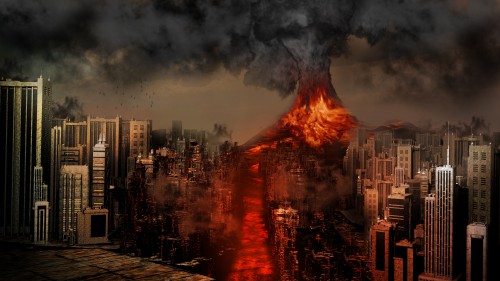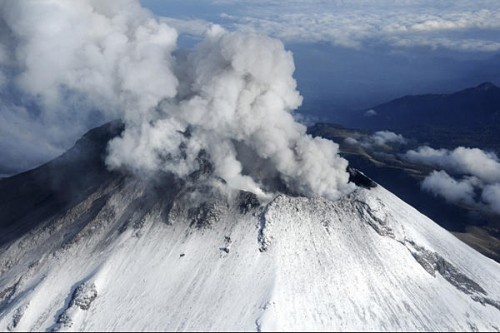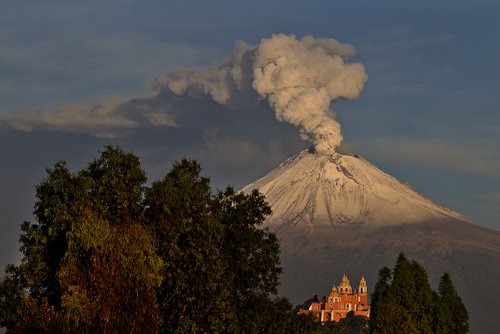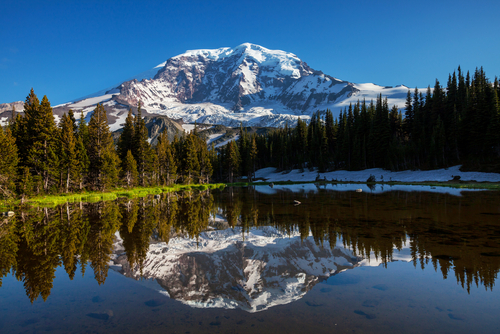Looking back you can see the unfortunate servant, still stoking the boiler and unaware of the twenty-first century traffic rushing by overhead.
Diane.patmore
Shared posts
Beneath The Roaring Traffic
Diane.patmoreLike the ancient artifacts dotted around the Athens subway.
Looking back you can see the unfortunate servant, still stoking the boiler and unaware of the twenty-first century traffic rushing by overhead.
Gastropubenteritis

Adults have been enviously eyeing the straightforward and tasty children’s menu in a London gastropub, it has emerged.The Daily Mash
The grown-up menu at the Hoop and Wheelmaker pub in Hampstead includes unappealing items such as buttered kale casserole, plus simply incomprehensible ones like ‘lamb minarets’.
By contrast, the children’s menu contains classic dishes such as fish fingers, chips and beans, beef burger, chips and beans, and sausages, chips and beans.
Adult Tom Booker said: “That’s proper, actual food. But apparently it’s only available to the under-12s and I have to pay £15 for a cauliflower steak. I mean, fuck off with that.
“Also my kids ordered in 30 seconds, whereas I had to pretend I understood the pretentious menu. What are ‘hand-roasted tomatoes’ anyway?”
Fellow customer Donna Sheridan said: “I had to have a manky sourdough ciabatta while my children were tucking into burgers and potato waffles. It’s so unfair I almost had a tantrum.
“My friend Helen had the cunning idea of ordering two kiddy-sized portions of fish fingers, chips and peas, but the bastards are wise to that and they took the children’s menus away.”
Of course.
Even these Terrible Maps can teach us something

- Since 2016, Terrible Maps has been collecting, well… terrible maps.
- They're awful, pointless and stupid, but also funny (and sometimes even instructive).
- Here are 10 examples. Dive into the Twitter account for hundreds more.
What a strange map. How can I store it and collect more? That's how the Strange Maps blog got started back in 2006. Replace 'strange' with 'terrible', and you've got the idea behind Terrible Maps, a Twitter account that has been spewing awful, pointless, stupid maps since 2016.
Luckily, most are also quite funny – at least a chuckle, sometimes a snort – and not a few actually offer an insight worth contemplating. Here are our ten favorites. Click on the link below for the Twitter account.
All directions north

You can't go further south than the South Pole, which means that any other point is north again. Wait, does that mean you can't go east or west from the South Pole?
Iggy Coke?

Iggy Pop is a mercurial character. To some, he's The Passenger, a rock 'n roll legend; to others, he's a car insurance salesman. This map grafts his persona on the map of the US that shows the border between people who call a carbonated drink 'pop', and those for whom that's a 'soda'. (see also #308)
Moon on Flag and Flag on Moon

The Moon is frequently used in Islamic iconography: on top of mosques, and on the flags of several majority-Muslim nations, but also Croatia and Moldova (in red on this map). But while 13 countries have the moon on their flag, there is just one country with its flag on the moon. That's right: USA! USA!
Ding Dong, TX

Most people with have heard of Boring, Oregon. Here are some of America's other odd town names – one per state – that you might not have been aware of. Jackpot, NV and Okay, OK: yes, we see how those names came about. But Ding Dong, TX? Chugwater, WY? Booger Hole, WV?
Moose maps

Alaska is the biggest state in the U.S. But why is Maine second, Idaho third? The animal at the bottom is the key, and the legend of the map: each state is sized for their moose population. Even Nevada has a few.
Ages of the world

This map is a compound of the situation on the ground, and the prejudices of the mapmaker. Much of Africa, South America and the Arctic is living in the Stone Age. The interior of Australia, the north of Africa and elsewhere: colonial times. Russia, most of the US and China: the 1900s. The UK, the inhabited parts of Canada, Southern Europe, New Zealand: the present. Germany, Scandinavia, Japan, northeastern US, coastal China: the future. If you want to experience all at once: go to India.
Airus Forcus Romanus

Take any outline map and think of a legend that doesn't require you to alter it. Like this map of Roman Air Force bases in the second century AD. Also in this series: Electricity consumption in Europe in 1507. Countries arranged by geographical location. Knowledge of Cherokee in the EU. Popes per square mile. Alcoholism in Russia. Map of Earth if there was no land (i.e. blank). Saudi Arabia mapped only by its rivers (also blank). Map of Europe showing population per capita (a '1' in each country).
World Map of Bill Gates

Bill Gates is rich. Very rich. How rich? Richer than each of the countries on this map that have his grinning face superimposed on them.
Brexit vs. Mad Cow Disease

Left, in blue: UK areas that voted for Brexit in the 2016 referendum. Right, in dark grey: areas affected by bovine spongiform encephalopathy (BSE, a.k.a. 'Mad Cow Disease') during the 1992 outbreak. The correspondence between both maps is perfect. The message: the people who voted for Brexit were crazy, suffering from residual BSE. But the perfect correspondence is not that surprising: the second map is a black and white version of the first, with a different date slapped on. Point made. Fake data. Terrible map!
Gubernatorial eye colour map

A large, contiguous part of the US is ruled by blue-eyed governors: from Washington state all the way down to Florida. There are two blue-eyed islands in the northeast (Delaware-New Jersey and Massachusetts-New Hampshire). Virginia is the only state with a green-eyed governor. All the other states are ruled by brown-eyed top executives. Mind you, this map predates the mid-terms. Someone update this one, please!
Browsing through the Terrible Maps account, a few overlaps with Strange Maps jump out, including this map of potential EU leaving names, this world map of the metric system, and this map of the shortest route between all pubs in the UK. Are they terribly strange or just strangely terrible?
Find these and other terrible maps at Terrible Maps on Twitter or on Facebook. Thank you O. Jones for suggesting it. Strange Maps is also on Twitter, and on Facebook.
Strange Maps #952
Got a strange map? Let me know at strangemaps@gmail.com.
Wrecks of Poole Harbour

In a recent post, I promised more of Poole Harbour but it is such a vast subject that I thought I would break it up a bit……the post, not the harbour  ! For this post, I thought I would concentrate on Poole Harbour wrecks – or to be more accurate, boats that have become derelict because some are probably not technically wrecks!
! For this post, I thought I would concentrate on Poole Harbour wrecks – or to be more accurate, boats that have become derelict because some are probably not technically wrecks!
The remains of the boat above stand on Redhorn Quay where there was once a jetty, mainly used by boats crossing to the nearby Brownsea Island when its pottery industry was operating in the 19th century. This wreck was in fact a converted ship’s lifeboat – at the end of WW2 there was a huge surplus of lifeboats and many were bought up and converted for other uses. This one was a ‘lead lifeboat’. Apparently if you dig in the gravel, you will find evidence of a prop shaft indicating that it once had an engine. It seems that only the lead lifeboats had engines, the others were towed by the lead boats.

There are two stories behind this ‘wreck’ and no-one knows which is correct. One says that the boat beached itself there in the storms of 1987. The other more recent story suggests that the boat was bought by a consortium of local fishermen at the end of WW2 who at great expense tried to make the vessel watertight for use as a club fishing boat but without success. There is a lot of fibreglass inside the hull which gives credence to that story. It seems that all their attempts failed and the boat has remained there ever since, rotting away. In fact, I have watched it gradually disappearing over many years – the pictures above were taken some while ago and there is even less of the vessel remaining now.
What caught my eye at the time was the wonderful colour of the rusting hulk against the blue of the sky in the first picture, and of course the clouds  ! It was the juxtaposition of rusting hulk and beautiful sunset in the second picture.
! It was the juxtaposition of rusting hulk and beautiful sunset in the second picture.
Just a short distance along from this wreck, in Brands Bay, is another with even less to photograph. This is the scant remains of a pre-WW2 Seaplane Lighter. These flat topped vessels were originally built as a ‘dry dock’ for seaplanes which would be hoisted on board by flooding the rear tanks to lower the stern to sea level. These Lighters could be towed at considerable speed and it was realised that in fact planes such as Sopwith Camels could be launched directly from them and so they became known as the ‘worlds oldest aircraft carriers’. There was so little left of this wreck that I did not even take a picture of it!


The wreck above lies along the western shore of Holes Bay. It is another converted life boat and the story goes that it was from an American ship although I haven’t been able to confirm that. What we do know is that it was again used for a time as a fishing boat. The registration number on this one is PH294 which my research tells me was a Plymouth based registration. I have no idea how it came to be in Poole Harbour but, as with the previous wreck, it has gradually deteriorated and reeds have also completely entrapped it.
There is an interesting story around this one, in that a few years ago, scrap metal breakers turned up to dismantle and remove the remains but there was such an outcry by local residents that they ended up leaving it where it was. It seems that local people love their ‘wreck’ and kids love to play in it  ! Well, it has been there for over 35 years!
! Well, it has been there for over 35 years!


The vessels above are not technically wrecks at all because despite the state of them, they are still used! They are house boats that are resident in Bramblebush Bay, on the southern harbour shore. These two are ‘permanent’, mainly because they now rest on concrete bases, having rotted away quite badly so that they could no longer float. They both lean at crazy angles although I gather the internal decks have been levelled. I believe the reason these are kept despite their semi-dereliction is because if they were removed, permission would not be granted to replace them so they are being held together with string and glue to keep them going.
These two are not only occupied in summer but they are also joined by several other floating houseboats so there can be seven or eight in Bramblebush Bay during the summer months.

The wreck above also lies in Holes Bay but on the other shoreline to the earlier one. This is apparently an old tug boat named Southampton that I was told broke its moorings and beached there, only to be left to rot away. As you can see, there is little left of it now although it still makes a good resting place for gulls and cormorants.



Of course, there are numerous small boats that lie rotting in the reeds and on the mudflats and these always make interesting photographs. It is difficult to establish any historic records for these but, in any event, in many ways it is best left to the imagination where they came from and who used them. Their remains are perhaps a sign of the changing face of the industry of the harbour. Some remain still tethered to their moorings like packhorse animals that have died and been abandoned. They might have ended their useful life, but their legacy lives on as they enrich the lives of strange photographers such as me  !
!

Above is another rotting row boat hull that rests in the reeds along the shore of Holes Bay but this time I have included as a backdrop the more civilised part of the harbour shoreline. This is a harbour of contrasts, part wild, open and occupied by nature, and part heavily populated by people, a very definite north/south divide…….but more of that in a future post.
When you see these rotting hulks, your imagination conjures up all sorts of fanciful stories about where they might have come from – was it from a warship that sank off shore during the war, was it abandoned after the crew were rescued, maybe it was damaged in the Dunkirk evacuation etc etc? If they could speak, would they have an epic story to tell? The truth is usually much more mundane though as many were probably just no longer needed and so were abandoned to be reclaimed by the elements  !
!
On another point – maybe I’m just a bit odd, but why are these hulks so appealing and photogenic? Would it be the same if it was an old car dumped on the grass verge beside a quiet country lane? I suspect not  ! There is just something about a rotting hulk along the shoreline!
! There is just something about a rotting hulk along the shoreline!
My thanks must go to Tom Cousins, Researcher in Maritime Archaeology at Bournemouth University who several years ago carried out a survey of all the wrecks in Poole Harbour, both those on the surface and those under the sea. They are all monitored on an ongoing basis, especially after storms, to make sure than none move and become a danger to shipping.
The wrecks featured in this post are just a very small sample of those in Poole Harbour that appear on Tom’s map which shows around 100 derelict and decaying vessels of various shapes and sizes. With most, the remains are scant and many are in any event unreachable without a boat and diving equipment so they are certainly beyond my reach, but hopefully the ones featured here at least give a flavour of this historic harbour and its amazing heritage.
Of course, there have been older and more famous finds in this harbour such as the Iron Age longboat discovered by accident in the 1960’s and the 17th century Dutch vessel discovered just outside the harbour entrance. It is known that this harbour has been used by shipping for thousands of years so who knows what other secrets lie in the deep mud. Time may yet reveal some of those secrets.
Thanks for stopping by.
Until next time,
Your friend The Dorset Rambler
If you would like to contact me, my email address is terry.yarrow@gmail.com – comments and feedback are always welcomed.
All photographs, poems and words in this blog are the copyright of The Dorset Rambler and must not be reproduced without permission.
Orbital Speed
Orbital Speed
What if a spacecraft slowed down on re-entry to just a few miles per hour using rocket boosters like the Mars-sky-crane? Would it negate the need for a heat shield?
—Brian
Is it possible for a spacecraft to control its reentry in such a way that it avoids the atmospheric compression and thus would not require the expensive (and relatively fragile) heat shield on the outside?
—Christopher Mallow
Could a (small) rocket (with payload) be lifted to a high point in the atmosphere where it would only need a small rocket to get to escape velocity?
—Kenny Van de Maele
The answers to these questions all hinge on the same idea. It's an idea I've touched on in other articles, but today I want to focus on it specifically:
The reason it's hard to get to orbit isn't that space is high up.
It's hard to get to orbit because you have to go so fast.
Space isn't like this:

Space is like this:

Space is about 100 kilometers away. That's far away—I wouldn't want to climb a ladder to get there—but it isn't that far away. If you're in Sacramento, Seattle, Canberra, Kolkata, Hyderabad, Phnom Penh, Cairo, Beijing, central Japan, central Sri Lanka, or Portland, space is closer than the sea.
Getting to space[1]Specifically, low Earth orbit, which is where the International Space Station is and where the shuttles could go. is easy. It's not, like, something you could do in your car, but it's not a huge challenge. You could get a person to space with a small sounding rocket the size of a telephone pole. The X-15 aircraft reached space[2]The X-15 reached 100 km on two occasions, both when flown by Joe Walker. just by going fast and then steering up.[3]Make sure to remember to steer up and not down, or you will have a bad time.

But getting to space is easy. The problem is staying there.
Gravity in low Earth orbit is almost as strong as gravity on the surface. The Space Station hasn't escaped Earth's gravity at all; it's experiencing about 90% the pull that we feel on the surface.
To avoid falling back into the atmosphere, you have to go sideways really, really fast.
The speed you need to stay in orbit is about 8 kilometers per second.[4]It's a little less if you're in the higher region of low Earth orbit. Only a fraction of a rocket's energy is used to lift up out of the atmosphere; the vast majority of it is used to gain orbital (sideways) speed.
This leads us to the central problem of getting into orbit: Reaching orbital speed takes much more fuel than reaching orbital height. Getting a ship up to 8 km/s takes a lot of booster rockets. Reaching orbital speed is hard enough; reaching to orbital speed while carrying enough fuel to slow back down would be completely impractical.[5]This exponential increase is the central problem of rocketry: The fuel required to increase your speed by one km/s multiplies your weight by about 1.4. To get into orbit, you need to increase your speed to 8 km/s, which means you'll need a lot of fuel: $ 1.4\times1.4\times1.4\times1.4\times1.4\times1.4\times1.4\times1.4\approx 15$ times the original weight of your ship.
Using a rocket to slow down carries the same problem: Every 1 km/s decrease in speed multiplies your starting mass by that same factor of 1.4. If you want to slow all the way down to zero—and drop gently into the atmosphere—the fuel requirements multiply your weight by 15 again.
These outrageous fuel requirements are why every spacecraft entering an atmosphere has braked using a heat shield instead of rockets—slamming into the air is the most practical way to slow down. (And to answer Brian's question, the Curiosity rover was no exception to this; although it used small rockets to hover when it was near the surface, it first used air-braking to shed the majority of its speed.)
How fast is 8 km/s, anyway?
I think the reason for a lot of confusion about these issues is that when astronauts are in orbit, it doesn't seem like they're moving that fast; they look like they're drifting slowly over a blue marble.
But 8 km/s is blisteringly fast. When you look at the sky near sunset, you can sometimes see the ISS go past ... and then, 90 minutes later, see it go past again.[6]There are some good apps and online tools to help you spot the station, along with other neat satellites. My favorite is ISS Detector, but if you Google you can find lots of others. In those 90 minutes, it's circled the entire world.
The ISS moves so quickly that if you fired a rifle bullet from one end of a football field,[7]Either kind. the International Space Station could cross the length of the field before the bullet traveled 10 yards.[8]This type of play is legal in Australian rules football.
Let's imagine what it would look like if you were speed-walking across the Earth's surface at 8 km/s.
To get a better sense of the pace at which you're traveling, let's use the beat of a song to mark the passage of time.[9]Using song beats to help measure the passage of time is a technique also used in CPR training, where the song "Stayin' Alive" is used to . suppose you started playing the 1988 song by The Proclaimers, I'm Gonna Be (500 Miles). That song is about 131.9 beats per minute, so imagine that with every beat of the song, you move forward more than two miles.
In the time it took to sing the first line of the chorus, you could walk from the Statue of Liberty all the way to the Bronx:

It would take you about two lines of the chorus (16 beats of the song) to cross the English Channel between London and France.
The song's length leads to an odd coincidence. The interval between the start and the end of I'm Gonna Be is 3 minutes and 30 seconds,[10]Based on timing from the official Youtube video and the ISS is moving is 7.66 km/s.
This means that if an astronaut on the ISS listens to I'm Gonna Be, in the time between the first beat of the song and the final lines ...

... they will have traveled just about exactly 1,000 miles.
Liquid Jewels: High Speed Photos of Paint on Popped Balloons by Fabian Oefner
Diane.patmore;-)





Liquid Jewel is a new project by Swiss photographer Fabian Oefner (previously) as part of his ongoing exploration of manipulating paint with natural forces such as sound, centrifugal force, and even magnetism. In these new images the photographer turned his attention toward air pressure by harnessing the power of the popped balloon. Oefner covered modeling balloons in thick layers of acrylic paint and photographed each one milliseconds after popping it with a needle. The resulting effect captures the paint as its driven simultaneously inward and outward. See more over on Behance.
The Most Dangerous Volcano in North America
 When you live in Mexico, you get used to people in other countries thinking you are in a war-zone sort of apocalypse state. If it’s not narcos, it’s earthquakes, kidnappers, or chupacabras. These days, the thing for Americans to fear in Mexico is the volcano Popocatepetl, lovingly called Popo, which is chucking ash all over the place. Notice that many reports find it necessary to give Mexico City’s population alongside reports that it’s active. As if that number might drop significantly very soon.
When you live in Mexico, you get used to people in other countries thinking you are in a war-zone sort of apocalypse state. If it’s not narcos, it’s earthquakes, kidnappers, or chupacabras. These days, the thing for Americans to fear in Mexico is the volcano Popocatepetl, lovingly called Popo, which is chucking ash all over the place. Notice that many reports find it necessary to give Mexico City’s population alongside reports that it’s active. As if that number might drop significantly very soon.
Now, for those who live here it all seems silly. I didn’t even notice the ash – though some of these reports make you think it is piling up on the sidewalks. I have noticed the air quality is a little off for the middle of rainy season (when afternoon showers clean the skies). But all in all, the rumblings of our hulking neighbor hasn’t affected me. Far more annoying is the whole since-you-live-in-Mexico-you’ll-probably-be-dead-tomorrow attitude from friends and family.
It’s really terrible and borderline racist. But … that’s not to say I won’t use it to get a story. The last time Popo was spewing ash, I decided it was a great chance to write a story tentatively called “Popo: The Most Dangerous Volcano in North America.” The story came out of a drunken conversation with a geologist at a Dylan concert near the heart of the city. A few beers in, he gave me the impression Popo was about to level the city.

Popo as of last week
So I called up Robyn Lloyd at Scientific American and told her I had a story for her.
“Great,” she said. “I’ll take it, presuming it works out as you say it will.”
“What do you mean?” I said.
“Well, I mean, is Popocatepetl the most dangerous volcano in North America?”
“What kind of question is that?” I thought. Of course it is. It’s in Mexico and everything in Mexico is dangerous. Popo will blow and millions of people will die. Cut. Print.
Just to be sure though, I called up Randy White, a volcano expert and part of the Volcano Disaster Assistance Program, which monitors volcanoes on the continent and around the globe for USGS. White tells me that a volcano’s danger is related to a) how likely it is to explode, b) what kind of explosion it will create, and c) how many people live nearby. This can be expressed mathematically in the following equation (careful, it’s a little technical).

Contrary to what many news reports would have you assume, Popo is 40 miles away, not near enough to threaten Mexico City (unless lava runs uphill – it doesn’t, right?). However, it is close to Puebla, the country’s fourth largest city. And it certainly it’s a little erupt-happy. So, Popo is still North America’s most dangerous volcano, right?
“Popocatepetl is not North America’s most dangerous volcano,” White says. “It doesn’t even make the list of top five. Maybe top ten, since Puebla’s right there. But really I’m not terribly worried about it.”
Great. So now my story is “Popo: Probably Among the Pretty Dangerous Volcanoes in North America. Maybe.” It seems that Popo is just too predictable to be considered a properly dangerous volcano. Like me playing poker, it’s easy to tell what Popo is about to do. Plus, it vents off all its gas rather than storing it up, waiting to explode (like a coke bottle that slowly leaks out as opposed to a sealed one that’s all shook up). If it was to stop rumbling for 20 years or so, then White says he might start to worry.
In fact, Popo is such an easy read that there’s evidence people living in Mexica (or Aztec) times actually knew when it was going to erupt, moved off the slopes of the mountain, then came back and resettled after it had calmed. Also, there’s the type of explosion. Generally speaking, thicker, more silicon-rich lava causes volcanoes to explode violently. Runnier stuff make for impressive lava squirts, like in Iceland or Hawaii, but it doesn’t tend to blanket the continent in ash like Mt St Helens did. And Popo is on the runnier side.
So I ended the conversation deflated. My Mexico (Danger! Danger!) Volcano Killing the World story was dead. But before I hung up, though, I asked White what was the most dangerous volcano in North America. He thought for a minute and then listed Mt Shasta in California and Mt. Hood in Oregon, which are unpredictable but too remote to cause much harm.
“But the one that probably keeps me up at night the most is Mt Rainier,” he finally says. It seems that not only is Rainier far more mysterious than Popo, but its chemistry points to a more viscous, explosive eruption. Plus, it hasn’t erupted in over 100 years, sitting, building up pressure. And, of course, Tacoma is right there at its foot. If it decides to get nasty, the first thing it will do is melt its snowcap, thus creating destructive landslides of slushy mud, called lahars.
So there you have it. If you like to play it safe and avoid dangerous places and you live in Tacoma, think about relocating to Mexico City. Our volcanoes are more friendly.
Photo Credit: Shutterstock, SEMAR, Associated Press
A Logaritmical Spiral Appears Around a Wet Tennis Ball Photographed by Arvin Rahimzadeh
This is a great high speed capture by photographer Arvin Rahimzadeh who snapped a photo of this spinning, water-soaked tennis ball that exemplifies the geometry behind a golden Logaritmical spiral. Neat!
Reading to Sleep
Aha. The quote may be found online in a Powell's Books interview. In it Pinkwater mentions that he likes writing for children because they are really excited about reading and "…most adults read as a means of getting off to sleep."
Ouch! Ouch! That's not the reason we read! But sometimes we do. Read to get to sleep, I mean. Maybe it is to air the mind, smooth out the worry wrinkles, unclench the jaws from the day's anxieties.
Currently by my bed is Lectures on Literature by Vladimir Nabokov. I am reading this book to get to sleep, not because it is boring, but because it contains material that is familiar. The book is compiled from his notes and the lectures he gave at Wellesley (1941-48) and at Cornell University (began in 1948, left teaching in 1958). His style is entertaining, often over the top, but he did careful, close readings of books and he was very concerned with language and style, not so much with symbolism and interpretation. He focused on the author's perceptions and on tiny but interesting details such as in Bleak House: how the normally unremarkable green eyes of a cat vividly come to the foreground because a lighted candle is reflected in them (121). It helps if you have already read the books he covered, but he gave thorough summaries, so perhaps you will be inspired to read them. The only warning I have is that he did not seem to like women writers much and his take on Mansfield Park was somewhat dismissive of Jane Austen. So you might want to skip that one, which is first. Or read it, but be prepared. You don't have to like everything about an author or everything an author writes. Still, there is something comforting about someone telling you a story you already know.
Books discussed
- Bleak House by Charles Dickens
- Madame Bovary by Gustave Flaubert
- The Strange Case of Dr. Jekyll and Mr. Hyde by Robert Louis Stevenson
- The Walk by Swann's Place (Swann's Way) by Marcel Proust
- "The Metamorphosis" and Other Stories by Franz Kafka
- Ulysses by James Joyce
To get an entertaining feel for Nabokov as a professor, you can read an article by Edward Jay Epstein who was a student of Nabokov's at Cornell. If you haven't read any of Nabokov's novels (not Lolita?) I'd recommend Speak, Memory; Transparent Things; and The Stories of Vladimir Nabokov. Pale Fire and Look at the Harlequins! are other possibilities.
Remembering Randy Udall
 Late last month, 61-year-old Randy Udall shouldered a backpack and set out, alone, into the Wind River Mountains of Wyoming. It was a habit of his: Randy was an experienced outdoorsman, and he periodically retreated from his busy, public life into the solitude of the Wind Rivers. He told his family that he would be home in western Colorado on June 26.
Late last month, 61-year-old Randy Udall shouldered a backpack and set out, alone, into the Wind River Mountains of Wyoming. It was a habit of his: Randy was an experienced outdoorsman, and he periodically retreated from his busy, public life into the solitude of the Wind Rivers. He told his family that he would be home in western Colorado on June 26.
On July 3, after an intensive search, Randy’s body was discovered along the off-trail route he’d planned to follow. He had died suddenly, with his pack on his back and hiking poles still clutched in his fists, apparently of a heart attack or stroke.
Randy Udall was often identified by his relations. After all, he was a son of longtime Arizona congressman Morris “Mo” Udall, a nephew of Interior Secretary Stuart Udall, a brother of Colorado Senator Mark Udall, and a cousin of New Mexico Senator Tom Udall. The Udalls, descended from Mormon pioneers, are the Kennedys of the Rockies, and for generations they’ve championed the region’s often-overlooked landscapes and people.
Randy was an energy-efficiency expert and cofounder of the Community Office for Resource Efficiency, which promoted the use of renewable power in and around Aspen, Colo. Unlike many of his relatives, he worked outside the national spotlight. But as a journalist, I got to see the power and reach of what he did.
I didn’t know Randy well. (For a lovely and much more personal remembrance by his friend and colleague Auden Schendler, along with some of his own writings, see here.) He was a generous longtime source, though, and I often saw him perform — there is no other word for it — on panels, behind podiums, and once, tour-guide style, from the front of a moving bus. Funny, irreverent, and a habitual charmer, he used his charisma to demystify one of the most mystifying, least charismatic and most important subjects on the planet.
He had a special talent for memorable metaphor. We are the Oil Tribe, he said, gobbling up oil faster than his brother Brad once gobbled up a box of Mystic Mints after a 100-mile ski. He liked to compare the energy crisis to being lost in a blizzard, and to point out that the way to survive in the snow wasn’t to find something else to burn, but to conserve as much heat as possible. He calculated that both Cap’n Crunch and dried pig manure contained more energy than oil shale.
Randy was a doer as well as a talker — a creative pragmatist, he found novel ways to promote renewables and reduce greenhouse-gas emissions in his valley and beyond — but his talk was much more than, well, talk. Energy generation, distribution and use is extremely difficult to understand, and often about as interesting to hear about as wallpaper. Randy knew his stuff, and his explanations went down easy. Though he was an advocate, aiming to both enlighten and convince, it wasn’t necessary to agree with Randy in order to appreciate him. He helped his listeners see energy for what it is: the force running through all of our lives, the source of our power and very possibly our undoing, too.
Though we seem to be thoroughly, exhaustingly interconnected, it’s not quite so. Some of our most important global issues are so complicated, distant, or intangible that only a few people are capable of both penetrating them and translating them for others. The great Middle East reporter Anthony Shadid, who also died recently and much too soon, helped build an all-too-narrow bridge between a foreign world and our familiar one. Likewise, Randy decoded the complexities of energy and connected them with his listeners’ lives. He wasn’t the only person able to do so, but he was one of far too few. To lose him now, during this summer of killing heat waves and wildfires, burns especially deep.
Last fall, I met with a group of college students fresh from an afternoon with Randy. To demonstrate the meaning of a calorie, a horsepower, and a kilowatt-hour, he’d had them start a bow-drill fire to boil a quart of water, push a car two-tenths of a mile through the mud, and hike 800 vertical feet. Their delight in the experience was infectious, and their energy palpable. May it always be conserved.
Top: Randy Udall in late 2012, showing off a bow drill. Photo courtesy of the Whitman College Semester in the West.




